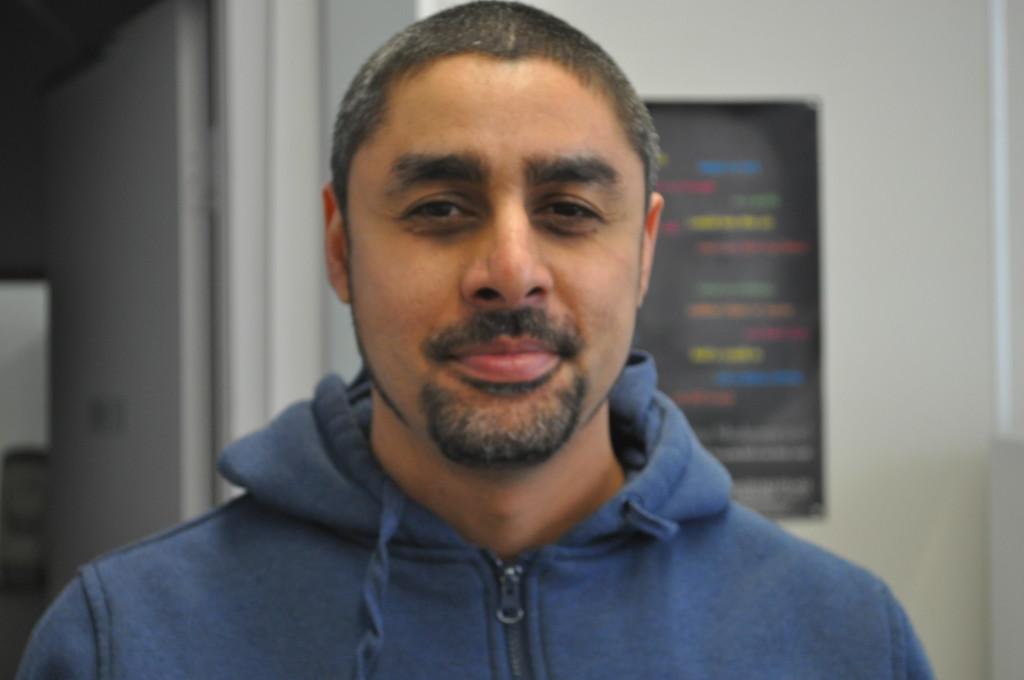Who knew that a simple ballot box placed in the main office would cause such an uproar? Former Community High School Dean Judy Conger didn’t, until one spring day in 1995. At the time, CHS operated on a traditional schedule, with 50-minute classes that met daily. When students saw a ballot box in the office, they assumed that the official vote on whether to switch CHS to block scheduling was already underway.
In fact, the students were mistaken. The staff, ever divided on the issue, had decided to first vote on whether to even hold a vote over block scheduling. Hence the ballot box. But the students didn’t know this, and, Conger said, there was a “tremendous amount of uproar.” Upset over not having been involved in the decision process, students began flooding Conger with petitions, marching into her office to talk, and showing up at Town Meetings (open forums that allowed students to express themselves) in huge numbers.
The students, however, weren’t the first to invest heavily in the issue of block scheduling, a system in which classes are longer but don’t meet every day. For several years, since the conversation about block scheduling started under Dean Bob Galardi, teachers had been professing their arguments for or against block scheduling. Many were passionately devoted to one side of the debate or another.
“People get emotional about things, and I was surprised to see everyone get so emotional about a schedule,” said Conger. “The schedule is hugely important—the schedule drives everything in the school.”
Now, over 15 years after block scheduling was implemented, teachers’ and students’ opinions on it are once again relevant topics of conversation. CHS classes now meet for 95-100 minutes every other day, with a full schedule of 55 minute classes on Fridays. But, as the Ann Arbor Public Schools prepares to discuss this year’s round of budget cuts, it’s possible that CHS’s scheduling system could again change.
On Jan. 7, current CHS Dean Jen Hein said in her weekly announcement email that the district is analyzing the costs of block scheduling. As a result, Hein explained in the email, during orientation presentations for current eighth graders, CHS counselors would mention both block scheduling and traditional scheduling as possibilities for next year, just in case CHS must change its schedule.
According to AAPS Deputy Superintendent of Operations Robert Allen, the number of students at Community was compared with an appropriate number at Huron and Pioneer High Schools, which use traditional scheduling. Community’s block scheduling was found to require three more teaching positions, which equates to $300,000.
However, although “Eliminate Block Scheduling” was listed in the AAPS report on “Cost Estimates of Potential Budget Reductions,” this report only lists possible budget reductions, and the board has not yet made any official recommendations or cuts. The official budget is required by law to be passed June 30, and likely will not be announced until April or later. Block scheduling is just one item among many options for cuts. And if it is discussed further, the district would do more analysis to find a more exact figure.
Still, the cost analysis of the block scheduling left CHS students and staff to imagine the implications of moving back to a traditional schedule, the opposite of what teachers were considering back in the 90s under deans Galardi and Conger.
Galardi, dean from 1988-1994, said that the original decision to consider block scheduling was in part due to a “national craze” for alternate scheduling options in the 90s and early 2000s.
“It was kind of the wave of things at the time,” said Conger, dean from 1994-2006. “It was a recommended method to improve achievement, to increase social connections, to not waste time—you’re not having passing time all the time.”
However, Galardi said that CHS was always looking at different options, even before the national discussion. But the school remained on traditional scheduling, partly to make it easier for students split-enrolling to Huron and Pioneer High Schools by matching those schools’ schedule.
During Galardi’s tenure, staff worked on increasing CHS enrollment, which had been low, and the school building was renovated. In an atmosphere focused on school improvement and change, new scheduling options also became part of the discussion.
“To me, it was part of a normal development of the school,” he said. “Once people started to see what we could do, there was a real demand to come. Then you have to up your game, because people are expecting something unique, and so I think it was in some ways driven by a couple of departments that said, ‘We could really use more time with the kids.’”
The discussion of block scheduling gradually evolved and became a hotter issue. But this meant that teachers, even some in the same department, came down on different sides of the debate.
“Any structural change like that in any organization, but certainly in education, becomes a divisive topic when you have a bunch of professionals because they all have very strong ideas and opinions about what you can and should be doing,” said Galardi.
Conger said that block scheduling appealed to teachers who were interested in project-based learning, especially teachers in the Foundations of Science (FOS) program, which was just starting at the time, and the art department. Longer periods meant less time taking out and putting away materials and more time to work on labs or projects. Other teachers in departments that placed value on daily practice and instruction, like jazz band and world language, worried about block scheduling. English and social studies were split, between teachers interested in trying project-based learning and those who had already established a curriculum that fit well into 50 minute segments.
“Some people thought, ‘Oh, this will be the death of my program,’” said CHS FOS teacher Liz Stern, who has been at the school since before block scheduling.
When Conger became interim dean and then permanent dean after Galardi, she encountered the “big fight” over block scheduling, and soon decided it was time to act. The school had already been working on block scheduling for a while, and originally Conger took a more laid-back approach. She attended some conferences and agreed to continue study on the schedule, until she realized that this was a stalling tactic.
“It could be really beneficial but after you’ve studied it a certain amount of time you move on or you drop it,” she said. “Let’s do it or not do it, but you can’t just keep talking about it.”
Conger and the staff spent time that year looking at block scheduling “really purposefully.” They invited people from schools with block scheduling to talk about it, and held professional development sessions focused on how to fill up a 90-minute class.
Neither Conger or Galardi remember cost analysis of block scheduling having a large role in the process. Though Galardi said the costs were likely analyzed during the discussion of block scheduling, it didn’t play much of a role because the district wasn’t in a budget crisis as it is currently. Conger’s boss, administrator for secondary education Jane Johnson, was a strong supporter of block scheduling, and gave Conger the go-ahead.
By the spring, it was time for a decision. Not all teachers wanted to vote on block scheduling, and so they decided to vote on whether to vote, which comes back to the ballot-box that caused students’ fiery response. Despite the commotion, Conger emerged with a stronger connection to students.
“That was a great initiation because I realized they loved their school, they wanted to be part of every decision, they wanted to be part of the bell schedule,” she said. “I think they came to realize I would talk to them, I wasn’t just trying to slam something down their throats, and so that was a really good outcome for me personally.”
In the end, the teachers did elect to have a vote on block scheduling. Students, parents, and all staff members, including custodians and secretaries, were able to cast a ballot.
“People would lobby for votes,” said Conger, laughing. “Jackie [the custodian] was getting her ear talked off by one group or another, and the same with the secretaries.”
Conger herself participated in the lobby for block scheduling, making her pitch to the secretaries. “I think it’ll be quieter, the building will be quieter, there won’t be as much changing, as much passing time,” she told them.
In the end—after another debate about who would count the votes and watch the counters—block scheduling won out and was implemented the next fall.
Stern said that professional development, research, and time over the summer to reorganize curriculums helped teachers adjust to the new schedule.
“It’s a big change,” she said. “You can’t just take your curriculum that you teach on a five days a week basis, a 50 minute class, and say, ‘Well, I’ll just plunk those two together.’ It was a lot of hard work.”
Still, Stern, who was in favor of block scheduling because of opportunities for the FOS programs, supports the innovation. “I think a lot of people felt, we’re Community High School, we’re supposed to be an alternative,” she said. “What’s alternative about us if we don’t try new things?”
Conger said that after the adjustment to block scheduling, most teachers became accustomed to it, and even many who had opposed it originally began to like it. Still, she said, some hard feelings remained among the staff, because people had defended their arguments so fiercely. Eventually, though, teachers moved past it.
Now, block scheduling is the norm at CHS, and many teachers can’t imagine going back, especially new teachers who have only experienced block scheduling. If Community does have to move back to a traditional schedule in the future, Stern is concerned about the challenges of switching again.
“So to go back, just like ‘snap’ okay now go back…well it doesn’t work that way,” she said. “Just like you can’t stick two 50 minute classes together, you can’t pull it apart either.”
Changing schedules requires professional development and an adjustment period. Stern thinks this is an important aspect of the conversation over cuts to block scheduling. “A discussion of block scheduling should only be held in the terms of ‘Does it help us?’ and ‘If they were to take it tomorrow what would we lose and could we make up for it?’” said Galardi. “We’re all losing things that we don’t want to lose in education because of money, and there’s just not a blank check out there.”


















